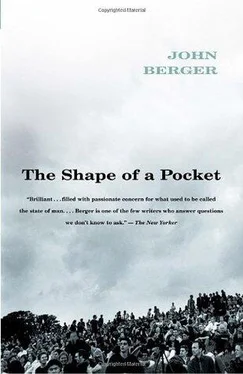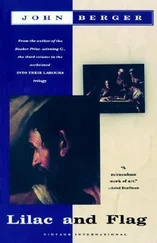Behind everything that Géricault imagined and painted — from his wild horses to the beggars he recorded in London — one senses the same vow: Let me face the affliction, let me discover respect and, if possible, find a beauty! Naturally the beauty he hoped to find meant turning his back on most official pieties.
He had much in common with Pasolini:
I force myself to understand everything,
ignorant as I am of any life that isn’t
mine, till, desperate in my nostalgia,
I realise the full experience
of another life; I’m all compassion,
but I wish the road of my love for
this reality would be different, that
I then would love individuals, one by one.
The portrait on the poster was once entitled The Mad Murderer , later, The Kleptomaniac. Today it is catalogued as The Monomaniac of Stealing. Nobody any longer knows the man’s proper name.
The sitter was an inmate of the asylum of La Salpétrière in the centre of Paris. Géricault painted there ten portraits of people certified as insane. Five of these canvases survived. Among them is another unforgettable one of a woman. In the museum of Lyon, it was originally entitled The Hyena of the Salpétrière. Today she is known as The Monomaniac of Envy.
Exactly why Géricault painted these patients we can only guess. Yet the way he painted them makes it clear that the last thing he was concerned with was the clinical label. His very brush marks indicate he knew and thought of them by their names. The names of their souls. The names which are no longer known.
A decade or two earlier, Goya had painted scenes of incarcerated mad people, chained and naked. For Goya, however, it was their acts that counted, not their interiority. Before Géricault painted his sitters in La Salpétrière perhaps nobody, neither painter, nor doctor, nor kith, nor kin, had ever looked for so long and so hard into the face of someone categorised and condemned as mad.
In 1942 Simone Weil wrote: ‘Love for our neighbour, being made of creative attention, is analogous to genius.’ When she wrote this she was certainly not thinking about art.
The love of our neighbour in all its fullness simply means being able to say to him: ‘What are you going through?’ It is a recognition that the sufferer exists, not only as a unit in a collection, or a specimen from the social category labelled ‘unfortunate’, but as a man, exactly like we are, who was one day stamped with a special mark of affliction. For this reason it is enough, but it is indispensable to know how to look at him in a certain way.
For me, Géricault’s portrait of the man with tousled hair and disarranged collar and with eyes which no guardian angel protects, demonstrates the ‘creative attention’ and contains the ‘genius’ to which Simone Weil refers.
Yet why was this painting so haunting in the streets of Paris? It pinched us between two fingers. I will try to explain the first finger.
There are many forms of madness which start as theatre. (As Shakespeare, Pirandello and Artaud knew so well.) Folly tests its strength in rehearsals. Anyone who has been beside a friend beginning to fall into madness will recognise this sense of being forced to become an audience. What one sees at first on the stage is a man or a woman, alone, and beside them — like a phantom — the inadequacy of all given explanations to explain the everyday pain being suffered. Then he or she approaches the phantom and confronts the terrible space existing between spoken words and what they are meant to mean. In fact this space, this vacuum, is the pain. And finally, because like nature it abhors a vacuum, madness rushes in and fills the space and there is no longer any distinction between stage and world, playing and suffering.
Between the experience of living a normal life at this moment on the planet and the public narratives being offered to give a sense to that life, the empty space, the gap, is enormous. The desolation lies there , not in the facts. This is why a third of the French population are ready to listen to Le Pen. The story he tells — evil as it is — seems closer to what is happening in the streets. Differently, this is also why people dream of ‘virtual reality’. Anything — from demagogy to manufactured onanistic dreams — anything, anything, to close the gap! In such gaps people get lost, and in such gaps people go mad.
In all five of the portraits Géricault painted in La Salpétrière the sitters’ eyes are looking elsewhere, askance. Not because they are focused on something distant or imagined, but because, by now, they habitually avoid looking at what is near. What is near provokes a vertigo because it is inexplicable according to the explanations offered.
How often today can one encounter a not dissimilar glance refusing to focus on the near — in trains, parking lots, bus queues, shopping precincts …
There are historical periods when madness appears to be what it is: a rare and abnormal affliction. There are other periods — like the one we have just entered — when madness appears to be typical.
All this describes the first of the two fingers with which the image of the man with tousled hair pinched us. The second finger comes from the compassion of the image.
Post-modernism is not usually applied to compassion. It might be both useful and humbling to apply it.
Most revolts in history were made to restore a justice which had been long abused or forgotten. The French Revolution, however, proclaimed the world principle of a Better Future. From that moment onwards all political parties of both left and right were obliged to make a promise which maintained that the amount of suffering in the world was being and would be reduced. Thus all affliction became, to some degree, a reminder of a hope. Any pain witnessed, shared or suffered remained of course pain, but could be partly transcended by being felt as a spur towards making greater efforts for a future where that pain would not exist. Affliction had an historical outlet! And, during these two tragic centuries, even tragedy was thought of as carrying a promise.
Today the promises have become barren. To connect this barrenness solely with the defeat of communism is short-sighted. More far-reaching are the ongoing processes by which commodities have replaced the future as a vehicle of hope. A hope which inevitably proves barren for its clients, and which, by an inexorable economic logic, excludes the global majority. To buy a ticket for this year’s Paris-Dakar Rally to give to the man with tousled hair makes us madder than he.
So we face him today without an historical or a modern hope. Rather we see him as a consequence. And this, by the natural order of things, means we see him with indifference. We don’t know him. He’s mad. He’s been dead for more than a hundred and fifty years. Each day in Brazil a thousand children die of malnutrition or illnesses which in Europe are curable. They’re thousands of miles away. You can do nothing.
The image pinched. In it there is a compassion that refutes indifference and is irreconcilable with any easy hope.
To what an extraordinary moment this painting belongs in the history of human representation and awareness! Before it, no stranger would have looked so hard and with such pity at a lunatic. A little later and no painter would have painted such a portrait without exhorting a glimmer of a modern or romantic hope. Like Antigone’s, the lucid compassion of this portrait coexists with its powerlessness. And those two qualities, far from being contradictory, affirm one another in a way that victims can acknowledge but only the heart can recognise.
This, however, should not prevent us from being clear. Compassion has no place in the natural order of the world, which operates on the basis of necessity. The laws of necessity are as unexceptional as the laws of gravitation. The human faculty of compassion opposes this order and is therefore best thought of as being in some way supernatural. To forget oneself, however briefly, to identify with a stranger to the point of fully recognising her or him, is to defy necessity, and in this defiance, even if small and quiet and even if measuring only 60cm. × 50cm., there is a power which cannot be measured by the limits of the natural order. It is not a means and it has no end. The Ancients knew this.
Читать дальше












